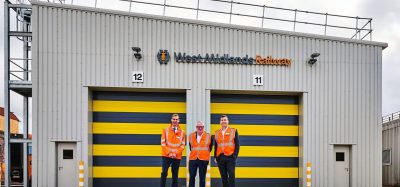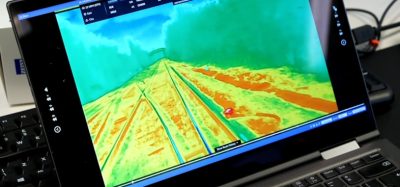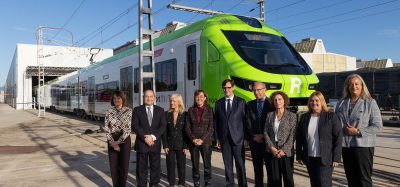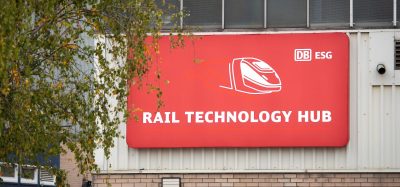Trends in design and fabrication of rolling stock
Posted: 6 February 2007 | | No comments yet
Whether rail vehicles are made from steel, stainless steel or aluminium, the search for lower cost, robust designs is never ending. For the case of aluminium, complete trains are being assembled from hollow aluminium extrusions and prefabricated panels. Recent investigations into the crashworthiness of aluminium railcars have clearly demonstrated the benefits of using innovative joint designs and optimised procedures for metal inert gas (MIG) and friction stir welding (FSW).
Whether rail vehicles are made from steel, stainless steel or aluminium, the search for lower cost, robust designs is never ending. For the case of aluminium, complete trains are being assembled from hollow aluminium extrusions and prefabricated panels. Recent investigations into the crashworthiness of aluminium railcars have clearly demonstrated the benefits of using innovative joint designs and optimised procedures for metal inert gas (MIG) and friction stir welding (FSW).
Whether rail vehicles are made from steel, stainless steel or aluminium, the search for lower cost, robust designs is never ending. For the case of aluminium, complete trains are being assembled from hollow aluminium extrusions and prefabricated panels. Recent investigations into the crashworthiness of aluminium railcars have clearly demonstrated the benefits of using innovative joint designs and optimised procedures for metal inert gas (MIG) and friction stir welding (FSW).
Many joining techniques are commonly used for rail vehicles, including metal inert gas (MIG), friction stir welding (FSW), resistance spot welding and bolting. Increasing interest is also being shown in laser-arc hybrid welding. Whatever the material of manufacture, many factors are taken into account in the fabrication of rail vehicles, including:
- Cost
The initial cost factor remains a major consideration but, increasingly, ways of reducing through life cost are being adopted. Reducing the anticipated through life maintenance bill is crucial, whether the vehicles are being purchased outright or leased. - Robust design
Manufacturers will always fabricate designs which meet the standards of the times. In recent years, more attention has been given to crashworthiness. Modern designs will certainly meet existing crashworthiness requirements and, as understanding of key issues grows, designs will increasingly reflect the next generation of standards. - End of life
The rail sector, like all other industry sectors, is increasingly turning its attention to dismantling and recycling issues. For example, in vehicles designed from stainless steel, there is great benefit in avoiding a mixture of materials, so as to simplify the end of life dismantling and maximise the value of the scrap. - European standards
Manufacturers must be alert to the fact that regulations covering the fabrication of rail vehicles across Europe are changing. The process of welding has always required a high level of skill and control to ensure that welds are fit for use. This recognises the fact that it can be difficult or expensive to check all welds once they are made, while at the same time a poor quality weld could have disastrous implications in terms of safety. European standards such as prEN 15085-2 on ‘Railway applications – welding of railway vehicles and components’ are therefore adopting an approach which is based on two standards already used in the German rail sector, DIN 6700 and DIN 18800. The new approach will require fabricators to demonstrate compliance with EN 719 and EN 729. Together, these standards cover requirements for the welders and the manufacturing facility. Compliance with these standards must be demonstrated by independent third party assessment. These changes are familiar to manufacturers which are already supplying to the German market. All other suppliers to the European market should now engage with an assessor organisation which has the necessary skills and has been accredited to do this work.
Crashworthiness
Approaches to crashworthy design have rightly received considerable attention in recent years, particularly in Europe. The European Commission funded project SAFETRAIN contributed much in this area. The majority of work has focused on crumple zones at the end of railcars to absorb impact energy, and features such as anti-climb devices.
In the event of an impact, while the crumple zone absorbs energy, it is of course important that the part of the rail vehicle containing passengers remains intact. Premature failure of welds in the rail vehicle would not be desirable. It was for this reason that, following the Ladbroke Grove accident in Britain in October 1999, the industry wished to understand the root causes of certain aluminium welds ‘unzipping’ during the accident. In his report on the accident, Lord Cullen recommended that consideration should be given to the following:
- The use of alternatives to fusion welding
- The use of improved grades of aluminium which are less susceptible to fusion weld weakening
- The further development of analytical techniques to increase confidence in the crashworthiness of rail vehicle structures, particularly those constructed of aluminium
The first two recommendations recognise that an inherent feature of all fusion welded joints in solution treated and artificially aged aluminium alloys is the considerable strength reduction in the weld region compared with parent material. Unless adequate consideration is given to this point at the design and build stage, fracture may occur during accidents in the vicinity of the weld, which could compromise the crashworthiness of the welded structure.
There are, in principle, many aluminium alloys to choose from, but modern aluminium railcars are made from complex double-skinned extrusions. The need for high strength and excellent extrudability limits choice to those alloys which do soften on welding. This prompted work to explore the extent of softening, depending on the alloy used and manufacturing process adopted.
In the EuroStir® project TWI, Rail Safety and Standards Board (RSSB), Angel Trains and HSBC Rail (UK) conducted tests, to compare FSW and MIG welding. Static tests and dynamic tensile tests were conducted, to compare the properties of these welds. The work quantified the softening effects, confirming that both processes lead to a level of softening which should be taken into account at the design stage.
Further insight was developed within the EC project ALJOIN, which studied the crashworthiness of joints in aluminium rail vehicles. Within this project Alcan, Bombardier Transportation, DanStir, NewRail (University of Newcastle) and TWI worked together to develop an understanding of the issues and develop new joint designs and welding procedures, to overcome any inherent joint weakness. This has enabled rolling stock manufacturers to develop new joint designs, suited to the specific fabrication process which will be used. Irrespective of the joining process used, it is important that the rail vehicles have an acceptable level of crashworthiness.
The new designs have been subjected to extensive numerical and physical validations. Computer simulations predict that, with the new designs, overload fracture would occur in the parent material rather than along the weld line. The predictions have been verified by extensive full-scale component tests under high-speed impact at Bombardier’s test facility in France (Figure 1). The newly designed FSW and MIG joints meet the stringent requirements for rail vehicle safety.
Increasing use of friction stir welding of aluminium
The railway vehicle industry continues to make increasing use of friction stir welding (FSW), a process invented and patented in 1991 at TWI in Cambridge (United Kingdom). The driver for its uptake is its combination of cost effectiveness and good weld performance. Another benefit is that the heat input during the process is low compared with MIG welding, so reducing the level of distortion.
This stems from the fact that the process operates below the melting point of the material to be joined. A rotating tool, which consists of a profiled pin and a tool shoulder, is inserted at the joint line between two pieces of aluminium to be joined. The rotating tool moves along the joint and heats the metal, which flows plastically to create a weld.
AMAG extrusion GmbH in Ranshofen (Austria) have built and commissioned a gantry type friction stir welding machine. During FSW the extrusions are clamped onto a sophisticated machine table to minimise distortion. So far, AMAG have produced more than 3,000m of friction stir welds in structural panels (Figure 2). They have welded floor panels and longitudinal girders for prototype aluminium trains of several train manufacturers.
Bombardier Transportation in Derby (United Kingdom) became a member of the very first TWI Group Sponsored Project on friction stir welding. After a three year process review they introduced friction stir welding onto their Electrostar range of vehicles for the UK market. They fabricate an increasing number of car bodies from friction stir welded aluminium panels, which are joined together using MIG welding. The FSW process is used to prefabricate stiff longitudinal extrusions which constitute the carbody sidewalls. No fewer than 376 friction stir welded vehicles have been ordered by London Underground for the latest Victoria Line upgrade (Figure 3). FSW is likely to be used on future contracts for over 2,000 more new trains in the next decade.
Hitachi (Japan) was amongst the first train manufacturers, to recognise the benefits of FSW. They use a double-skinned design for their vehicles which are constructed from hollow aluminium extrusions joined along their length by FSW. Hitachi comment positively on the low distortion and excellent mechanical properties of friction stir welds compared with MIG welds. Hitachi have delivered friction stir welded vehicles for both commuter and express use. They recently won a contract to supply the 29 train sets for the Channel Tunnel Rail Link (CTRL, Figure 4).
Kawasaki Heavy Industries (Japan) have recently used friction stir spot welding to attach stringers to roof panels (Figure 5). They developed a new aluminium car body shell, which is assembled by this method. KHI report a number of benefits for the joining technique, not least the fact that it improves the flatness and visual appearance of the skin panels because of the low heat input.
Sapa in Finspong (Sweden) started production of FSW panels more than 10 years ago. They now have a production rate of approximately 1,000m of friction stir welds per day, i.e. a yearly production rate of more than 300,000m. The total length of friction stir welds made by Sapa up to date is probably more than two million metres. In addition to the production of large rolling stock panels (Figure 6) they also produce smaller components, such as heat sinks for the high-power electronics of electric locomotives. Sapa supply all the major European train manufacturers (Alstom, Bombardier, CAF, Siemens, etc.) with aluminium extrusions and friction stir welded panels for a number of different projects.
Conclusions
Steel, stainless steel and aluminium all find favour as materials for rail vehicles. Whatever the material of construction, crashworthiness considerations now play a more important part in design.
The standards in Europe relating to fabrication are changing and manufacturers will need to be able to demonstrate that their welders, welding facilities and systems have been approved to the new standards.
The use of friction stir welding for the fabrication of aluminium rolling stock continues to grow around the world. In Europe this is aided by specialised supply chain companies which provide sub-assemblies to the rail vehicle builders.
Acknowledgements
The authors wish to thank the companies mentioned for permission to publish photographs and information on their products and manufacturing processes.
Stephan Kallee
Stephan Kallee gained his Diploma in Mechanical Engineering at the Technical University of Munich. After completing a course as a European Welding Engineer, he joined TWI in 1995, where he now focuses on land transport.
John Davenport
John Davenport gained his first degree and PhD from the University of Cambridge. He worked in industrial R&D and manufacturing industry before joining TWI in 2001 as Programme Manager covering rail and other industry sectors.
Global Railway Review Autumn/ Winter Issue 2025
Welcome to 2025’s Autumn/ Winter issue of Global Railway Review!
The dynamism of our sector has never been more apparent, driven by technological leaps, evolving societal demands, and an urgent global imperative for sustainable solutions.
>>> Read the issue in full now! <<<







